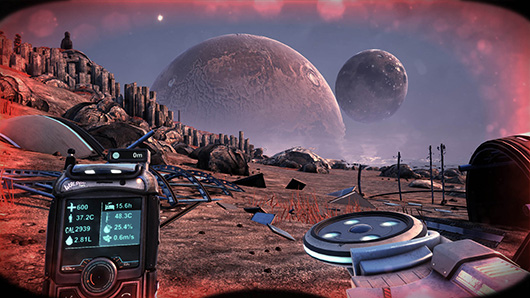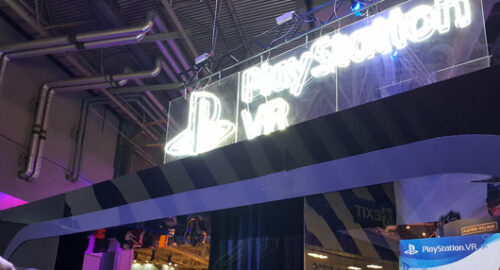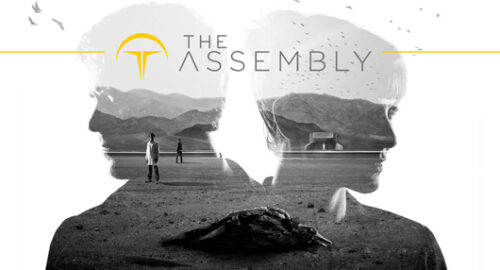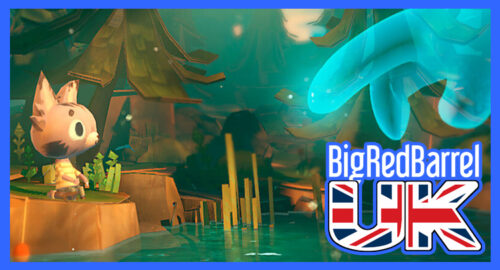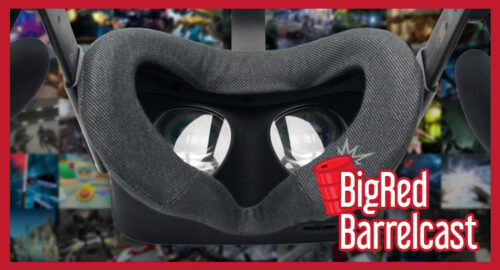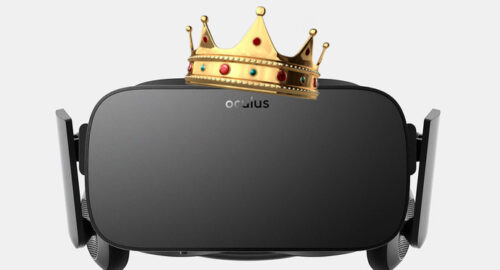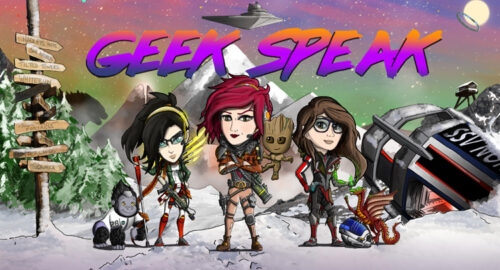MISSION LOG UPDATE: Prior to my departure to Gliese-6143- C, a mission I expect will go well, I decided to launch a scout probe to Teotl Studios’ basecamp to see what I could ascertain about the hostile alien environment ahead of me. I managed to make contact with someone claiming to be Sjoerd De Jong – not only the founder of Teotl Studios but the very creator of The Solus Project itself.
I have been looking forward to this mission for some time and despite being available on other systems, I was keen to make use of my PS VR exploratory equipment. Having successfully maintained a connection with Sjoerd De Jong I wanted to find out what was really at the heart of The Solus Project.
TIM: What were the primary influences for The Solus Project?
SJOERD: The biggest influence comes from the original Unreal game. The crash landing on a beautiful and captivating but deadly alien planet, full of ancient deserted megalithic buildings mixed with sci-fi is all straight from the first Unreal.
Another big influence was Indiana Jones and subsequently Tomb Raider. Both of those had a big impact on me growing up, and the sense of adventure from those is what I tried to capture in The Solus Project. The series Lost has had an impact too. The mystery, the fact that they were stranded in a strange world, and again the adventure are all key elements of The Solus Project. We even have a hatch, as well as a still running engine on the starting beach!
LOG: I needed to delve deeper into this mystery. I realised I may have encountered their presence previously;
TIM: Described as a spiritual successor to The Ball, what binds these games together and what is different about The Solus Project?
SJOERD: The Ball and The Solus Project take place on different planets but within the same universe. If you’ve played The Ball, it won’t be long before you will start spotting the similar architecture and symbols throughout the world, and you can start to wonder why structures on a planet light years from Earth seem to be so similar.
The general theme and atmosphere in The Solus Project is similar to The Ball. Both games also carry a certain old school first-person shooter vibe, and both games are about exploration and adventure in abandoned megalithic buildings. [However] The Solus Project has less combat and focused more on the world itself than The Ball. The world in itself is the main enemy in The Solus Project. It is partially a survival experience, and nature will throw everything it has at you. From rapid shifts between extremely cold nights to extremely warm days, to rising tides, tornadoes, lightning storms, hail, snow, meteor impacts, and so on. It is an experience built entirely around the alien world it takes place in.
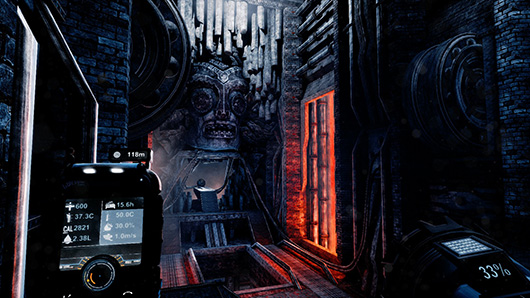
LOG: Sounds like I’m in for a bumpy ride. Thankfully I have cutting-edge equipment at my disposal. What was with their fascination with the technology of Earth?
TIM: I first played The Ball on the Ouya and now The Solus Project is coming to PS VR, what makes you as developers support emergent gaming technology?
SJOERD: We want to push ourselves to keep up with the latest developments and see how much we can push the technology and the game along. We began experimenting with VR all the way around the first Oculus dev kit became available, and VR is a natural fit for The Solus Project. The game is about the planet, the experience of being on an alien planet. The atmosphere and immersion is super important to the game, and VR is the best way of completely immersing a player into our world. That is why we really pushed the VR support for The Solus Project.
LOG: Looks like they intend me to be stuck here for a while. I needed to find out how others had fared ahead of me.
TIM: Having already released on PC and Xbox One, what has the response been like so far and will the PS4 version be exactly the same?
SJOERD: The PS4 version is identical to the PC and Xbox One version content-wise, but obviously, the PC gives access to higher graphic settings due to greater hardware power. The response on the PC and Xbox One version has been really nice. The market is tough and getting tougher every year. When I set out to build The Solus Project I didn’t look what kind of game would sell a lot, or how it should compare to game X or Y for the sake of hitting sales goals, instead I focused on building my own dream game. The game I wanted to build, and I hoped that people would recognize the passion that went into the game. And luckily they definitely did.Our previous games did pretty
Our previous games did pretty okay too, but The Solus Project has already far outsold our earlier games. It has been awesome to see people get really soaked up by the world we made. A world we are now making that world available to PS4 gamers too.
LOG: What were this man’s motivations? Did he truly want me to survive and why was he sending me to a hostile alien planet?
TIM: There seemed to have been an abundance of survival games in recent years but not as many set in space. Why is the genre so popular at the moment and what makes space a good setting for a survival game?
SJOERD: My theory is that Minecraft has been partially responsible for the first wave of survival games. Almost all survival games out there are essentially sandboxes however. They don’t work very well at all for people with limited amount of time, or who would like to have a bit more direction into what to do. I can imagine that most survival games work well for teenagers, but not so much for 30+ year olds. That is what we tried to tackle with The Solus Project. A survival game with a story, with objectives and goals, and without repetitive chopping down of trees to build shelters over and over. Survival is not the focus of the game, but a tool to reinforce the world itself. It makes you respect the world and be cautious of it, but the real reason for playing the game is the story and exploration.
Space is a very harsh environment, and an alien planet is the definite place for a survival experience. You are the only human alive on that planet, and there is absolutely no one who could come and help you. You are utterly alone.
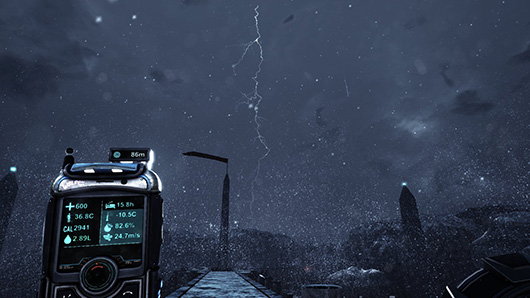
LOG: I was fast learning not to trust this man, but hoped I could still trust my equipment.
TIM: VR seems like a great fit for games set in space and survival games in particular. What do you think VR adds to the experience of playing your game?
SJOERD: It feels like a whole new game each time I try it in VR. The first time I properly played the first level start to end in VR I ended up staring at things for ages, just admiring how 3D and immersive the rocks or plants feel. And when a gigantic tornado moves towards you, the size and scale of it in VR is really fascinating as well, but also utterly scary. When you walk through dark caves with a torch, you really feel the immense weight of all the rocks above you weigh down on you. And so on. Basically, everything gets amplified in feeling.
LOG: I needed to get him to slip up, to reveal some of his secrets – to see if I could find an easy way out of The Solus Project.
TIM: What was the biggest challenge you faced when developing a game for VR?
SJOERD: There are not many set standards yet, so there was a lot of work to figure out how to best approach and overcome certain challenges. For example what are the expected controls. There are also lots of really hard problems to solve, that neither we nor anyone else has a perfect solution for yet in VR. An example there is the motion sickness problem. You can counter it in all kinds of way, but at the end of the day it does remain a significant limitation.
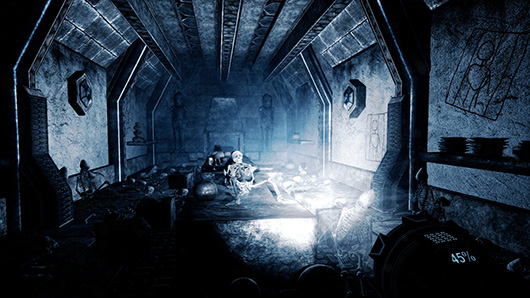
LOG: He seemed obsessed with me being “immersed” in this environment. How long had he planned to trap me here?
TIM: How much time does adding support for VR add to your development time?
SJOERD: It depends on the game, but since The Solus Project is a big game it did take a pretty long time to add in. It definitely isn’t just a case of flipping a VR switch somewhere. You need to account for motion sickness, but also deal with user interfaces in a new way. You can’t render a 2D menu on top of the screen in VR, because your eyes wouldn’t be able to read something that is right in front of them. So you need to go in and convert all user interface, HUDs and menus to 3D rendered elements.
You also got entirely different controllers, and will need to ensure those not just work well, but empower the existing gameplay even. And so on. There are lots of things to deal with, and when you make a cross VR/non VR game like we did you also have to make sure any solution you come up with is compatible with either way the game can be played.
LOG: I needed to know if he could be bribed. Could I buy my way out?
TIM: At £16.99 (£12.79 with Pre-Order discount) seems like a very reasonable price point for a game that is said to be around 15 hours. What influences the price point you have picked?
SJOERD: We feel the price is indeed very reasonable for a game this big. We made the game we love, and we want people to experience it for a fair amount. We don’t want the price to be an obstacle for anyone, but of course we also still have to ensure it is high enough for it to bring in enough sales to operate our company on. We feel the current price is fair to both us and the gamers.
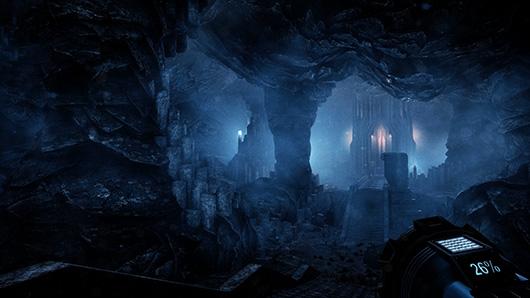
LOG: How did this “creator” see his place in this universe?
TIM: Would you say The Solus Project is a large indie game or a small AAA game? Do you think these labels are becoming less and less relevant?
SJOERD: I guess you could call it a AAA indie game, or a AA game? But all of these are pretty ambiguous to be honest. We are indie in the sense that we are entirely independent, and just a handful of people, who made a game driven by passion for what they do and not profit. We also made a big game with high end graphics. You can label it as you see fit, but we hope you like the game either way.
LOG: Perhaps I could find out more but establishing what this creator envisaged the universes beyond his world?
TIM: What are other genres that you think are a good fit for VR that you would like to see developed for VR platforms?
SJOERD: I would personally love to see more experiences. Being in other places. Using VR to try and understand or feel what it would be like to be in a certain place, or during a certain moment in history. I am more interested in the storytelling aspect of VR than gameplay mechanics and features.
—————————————–
LOG FINAL UPDATE: It seems that I am only going to fully get to the bottom of this mysterious planet, Gliese-6143- C by visiting it myself. So, I am off to report to my ship, I assume I will have an entirely safe flight. Commencing countdown, PS VR headset on.
